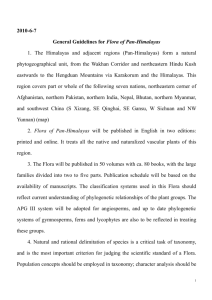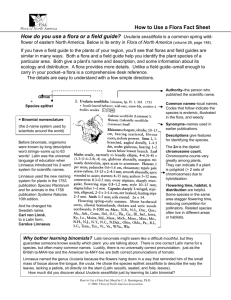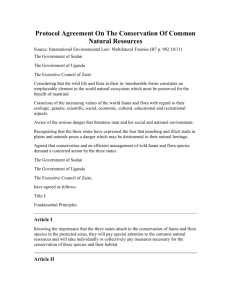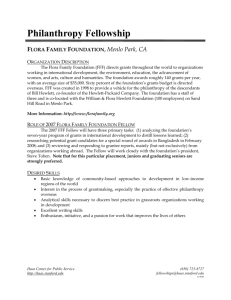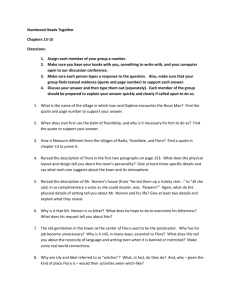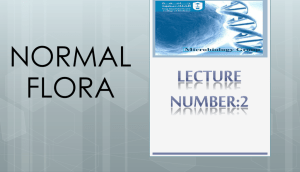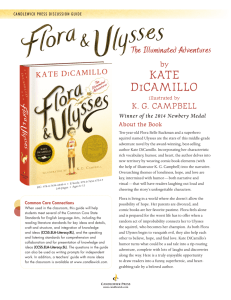Taxonomy is a dynamic science that seeks to describe our current
advertisement
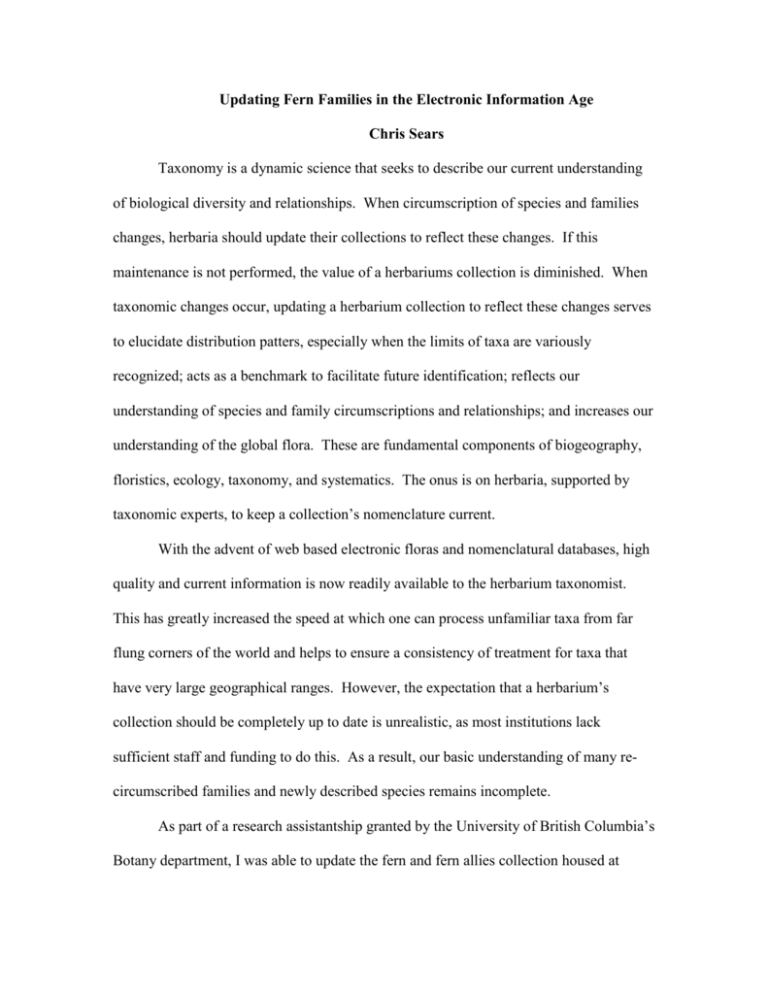
Updating Fern Families in the Electronic Information Age Chris Sears Taxonomy is a dynamic science that seeks to describe our current understanding of biological diversity and relationships. When circumscription of species and families changes, herbaria should update their collections to reflect these changes. If this maintenance is not performed, the value of a herbariums collection is diminished. When taxonomic changes occur, updating a herbarium collection to reflect these changes serves to elucidate distribution patters, especially when the limits of taxa are variously recognized; acts as a benchmark to facilitate future identification; reflects our understanding of species and family circumscriptions and relationships; and increases our understanding of the global flora. These are fundamental components of biogeography, floristics, ecology, taxonomy, and systematics. The onus is on herbaria, supported by taxonomic experts, to keep a collection’s nomenclature current. With the advent of web based electronic floras and nomenclatural databases, high quality and current information is now readily available to the herbarium taxonomist. This has greatly increased the speed at which one can process unfamiliar taxa from far flung corners of the world and helps to ensure a consistency of treatment for taxa that have very large geographical ranges. However, the expectation that a herbarium’s collection should be completely up to date is unrealistic, as most institutions lack sufficient staff and funding to do this. As a result, our basic understanding of many recircumscribed families and newly described species remains incomplete. As part of a research assistantship granted by the University of British Columbia’s Botany department, I was able to update the fern and fern allies collection housed at UBC. Family level circumscription and nomenclature followed those outlined in Smith et al. 2007. The bulk of the fern collection housed at UBC is from British Columbia and the rest of North America, including Alaska and Hawaii. Species level treatment for this material largely mirrored those of Flora of North America for continental North America and USDA for Alaska. Much of the remainder of the collection is from Western Europe and Russia with some material form Japan, China, the Philippines, Oceana, Zimbabwe, Zambia, and South America. Lower taxonomic treatment for such a wide geographic area was problematic due to a lack of current secondary literature that is congruent with the Flora of North America treatments. As a result I had to rely largely on dated published floras, cross-referenced with on-line floras such as Flora Europaea, Flora of Japan, Flora of Australia, and Flora Zambesiaca in combination with the primary literature. The appropriate primary literature was searched for using w3TROPICOS or IPNI. Spelling of specific epithets and authors were confirmed using these online nomenclatural databases. This approach was very time consuming and took up the bulk of my time. However, this project would not have been possible to complete in the time allotted if it were not for these online resources. The much anticipated Flora of China Volume I should do much to address many outstanding taxonomic issues regarding material from Southeastern Asia. Literature Cited Smith, A. R., K. M. Pryer, E. Schuettpelz, P. Korall, H. Schneider & P. G. Wolf. 2006. A classification for extant ferns. Taxon 55(3):705–731. On-line resources Cited 2007 IPNI, international plant name index, Available from http://www.ipni.org/index.html Flora of Australia Online, Australian Government Department of the Environment and Water Resources, available from http://www.environment.gov.au/biodiversity/abrs/onlineresources/flora/main/index.html Flora Europaea, Royal Botanic Garden Edinburgh. Available from http://rbgweb2.rbge.org.uk/FE/fe.html Flora of Japan, Japanese Society for Plant Systematist, available from http://foj.c.utokyo.ac.jp/gbif/ Flora Zambesiaca, Ryal Boanic Gardens, Key, Available from http://www.kew.org/efloras/search.do w3TROPICOS, Missouri Botanical Garden, Available from http://mobot.mobot.org/W3T/Search/vast.html
